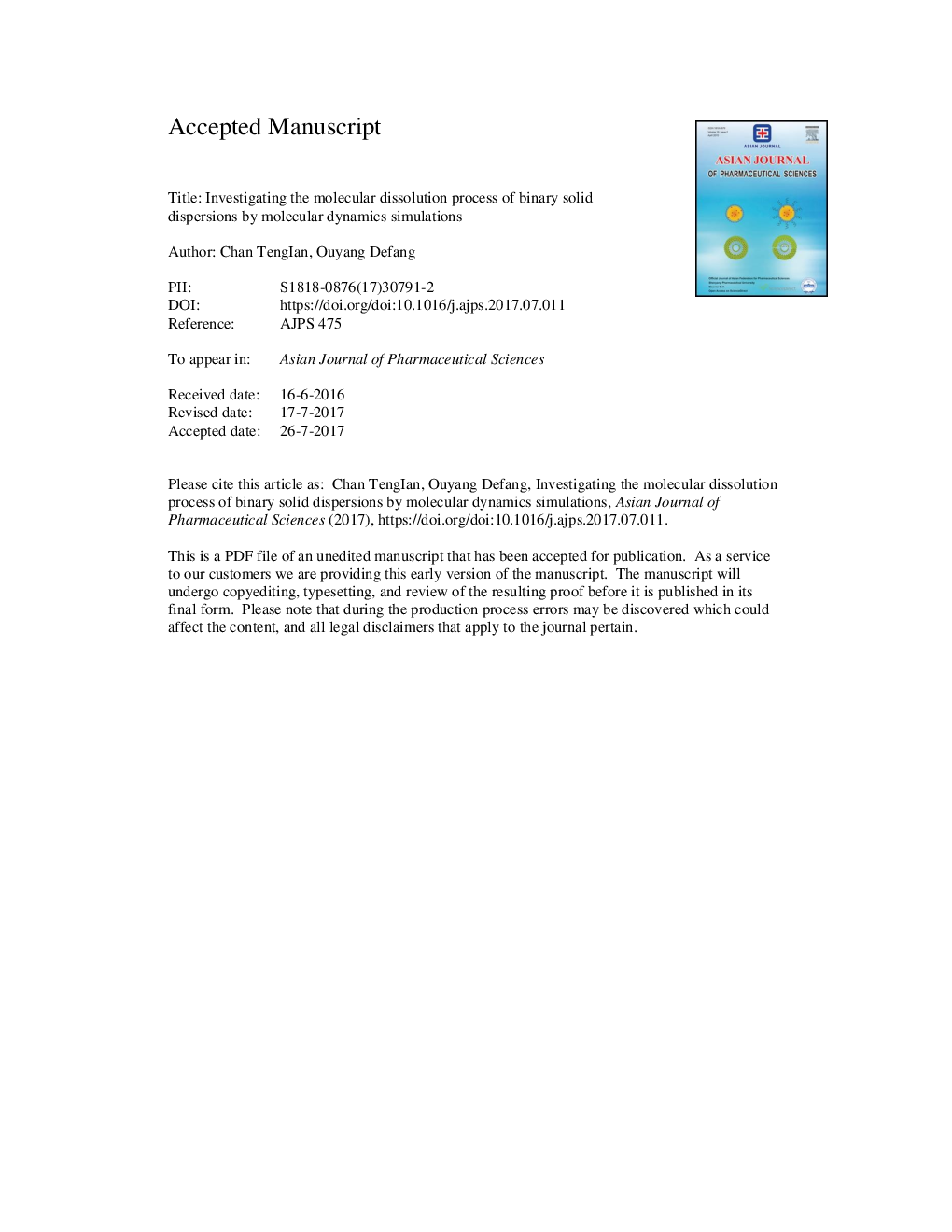| Article ID | Journal | Published Year | Pages | File Type |
|---|---|---|---|---|
| 8518962 | Asian Journal of Pharmaceutical Sciences | 2018 | 19 Pages |
Abstract
Dissolution molecular mechanism of solid dispersions still remains unclear despite thousands of reports about this technique. The aim of current research was to investigate the molecular dissolution mechanism of solid dispersions by molecular dynamics simulations. The formation of ibuprofen/polymer solid dispersions was modeled by the simulated annealing method. After that, the models of solid dispersions were immersed into the water box with 25-30âÃ
thicknesses and 50-100 ns MD simulations were performed to all systems. Simulation results showed various dissolution behaviors in different particle sizes and various polymers of solid dispersions. Small-sized particles of solid dispersions dissolved quickly in the water, while the large particles of PEG or PVP-containing solid dispersions gradually swelled in the dissolution process and drug molecules may aggregate together. In the dissolution process, the carboxylic groups of ibuprofen molecules turned its direction from polymer molecules to external water box and then the drug molecules left the polymer coils. At the same time, polymer coils gradually relaxed and became free polymer chains in the solution. In addition, solid dispersion with poloxamer could prevent the precipitate of drug molecules in the dissolution process, which is different from those of PEG or PVP-containing systems. This research provided us clear images of dissolution process of solid dispersions at the molecular level.
Related Topics
Health Sciences
Pharmacology, Toxicology and Pharmaceutical Science
Pharmaceutical Science
Authors
TengIan Chan, Defang Ouyang,
